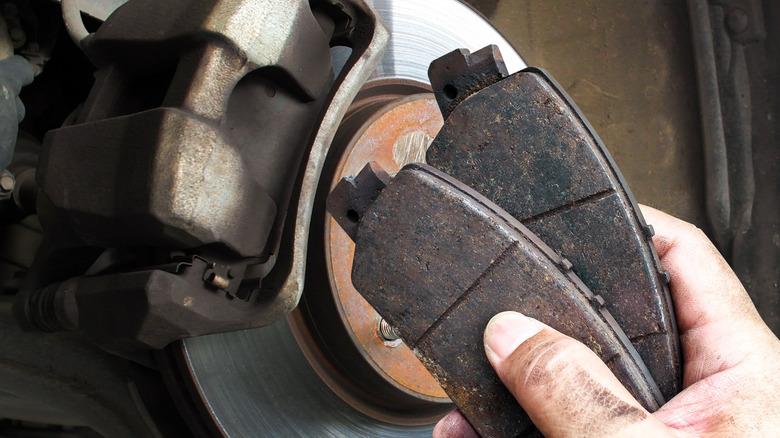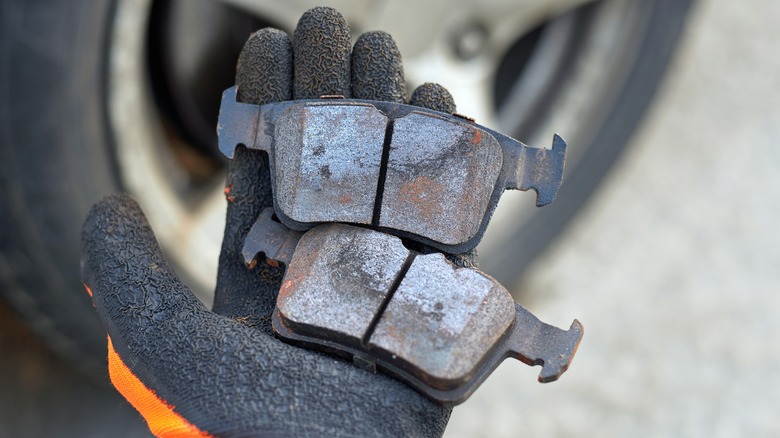Do Modern Car Brakes Have Asbestos In Them? Here's What You Need To Know
It may seem ridiculous to consider that asbestos was used in brake pads throughout much of the 20th century, and on a fairly widespread basis until the 1980s, when automakers and parts manufacturers began phasing out the toxic material. What may seem even more insane is that the EPA didn't actually ban the use of asbestos in brake pads until March 2024 — even though we've known about the links between asbestos and cancer since the 1930s.
However, if we ignore the health consequences, there were many strong arguments in favor of using asbestos in brake pads. For instance, asbestos handles heat brilliantly: It doesn't become brittle or deform even when subjected to extreme temperatures, which makes it an ideal material for brake pads. Furthermore, asbestos is a high-friction and hard-wearing material. It's clear to see why asbestos was so popular, then. Thankfully, manufacturers use a variety of different materials to make brake pads now, all of which are much safer than asbestos when it comes to human exposure.
It's worth noting that, while the EPA has banned the manufacturing of asbestos brake pads in the U.S., pads produced elsewhere may still contain asbestos. So, yes, some modern brake pads may still have asbestos, but buying brand-new pads from American companies should be a safe way of ensuring you avoid the harmful substance.
Asbestos can still be found in older brake pads
While you can be certain to avoid asbestos in new brake pads by purchasing NAO — non-asbestos organic — pads, what you can't be certain about is whether the old pads you're replacing are equally asbestos-free. This is especially true for older cars, particularly classics that haven't had their pads changed in a long time. Asbestos was widely used up until the 1980s, after all, despite being a surprisingly deadly technology up there with the likes of radium.
So, if you're unsure about the properties of the old brake pads you're changing, you should wear appropriate safety gear and dispose of the old pads correctly. The EPA suggests home mechanics double-bag old brake pads and follow local regulations when disposing of pads that may have asbestos.
Other things to be aware of when changing brake pads include any rags or clothes used to wipe the brakes down, which you should also dispose of. You should also be mindful when hitting the caliper to help free it, as this may send asbestos particles flying around you in a cloud of old brake dust. If at all unsure, it's probably best to have your brakes changed professionally and err on the side of caution.

